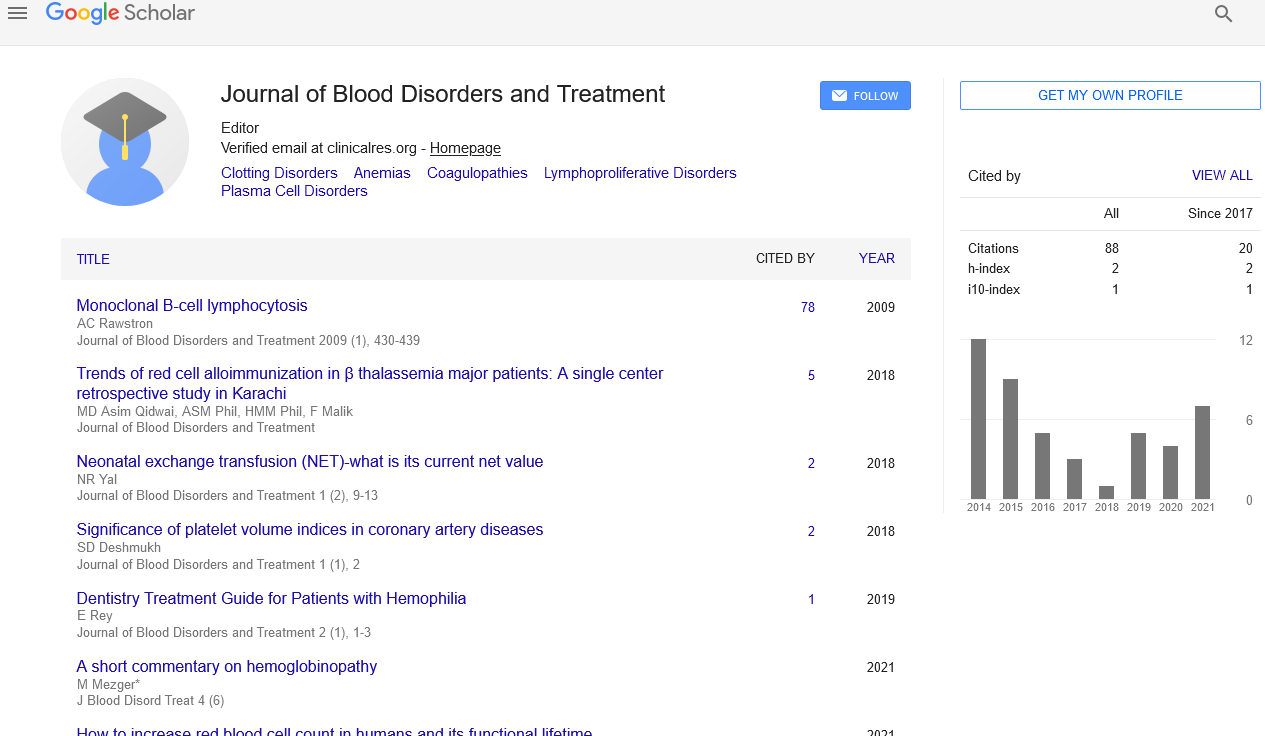Plasma Cell Disorder
Hyderabad
, India, Email: neethikabillakanti321@gmail.comHyderabad
, India, Email: neethikabillakanti321@gmail.comReceived: 05-Jan-2021 Accepted Date: Jan 18, 2021; Published: 25-Jan-2021
This open-access article is distributed under the terms of the Creative Commons Attribution Non-Commercial License (CC BY-NC) (http://creativecommons.org/licenses/by-nc/4.0/), which permits reuse, distribution and reproduction of the article, provided that the original work is properly cited and the reuse is restricted to noncommercial purposes. For commercial reuse, contact reprints@pulsus.com
Plasma cell disarranges are a differing bunch of clutters of obscure etiology characterized by Disproportionate expansion of a single clone of B cells Presence of a basically and electrophoretically homogeneous (monoclonal) immunoglobulin or polypeptide subunit in serum, pee, or both.
After creating within the bone marrow, undifferentiated B cells enter fringe lymphoid tissues, such as lymph hubs, spleen, and intestine (eg: Peyer patches). Here, they start to distinguish into develop cells, each of which can react to a constrained number of antigens. After experiencing the fitting antigen, a few B cells experience clonal expansion into plasma cells.
Each clonal plasma cell line is committed to synthesizing one particular immunoglobulin counter acting agent that comprises of 2 indistinguishable overwhelming chains (gamma [γ], mu [μ], alpha [α], delta [δ], or epsilon [ε]) and 2 indistinguishable light chains (kappa [κ] or lambda [λ]). A slight abundance of light chains is ordinarily created, and urinary excretion of little sums of free polyclonal light chains (≤ 40 mg/24 hours) is typical. Plasma cell disarranges are of obscure etiology and are characterized by the unbalanced expansion of one clone. The result could be a comparing increment within the serum level of its item, the monoclonal immunoglobulin protein (M-protein).
M-proteins may comprise of both overwhelming and light chains or of as it were one sort of chain. Complications of plasma cell multiplication and M-protein generation incorporate the taking after: Harm to organs (especially the kidneys due to hypercalcemia or poisonous light chains emitted by the threatening plasma cell): A few M-proteins appear counter acting agent movement against self-antigens.
Impaired resistance: There's diminished generation of other immunoglobulins. Bleeding propensity: M-protein may cause dying by coating platelets, inactivating clotting components, expanding blood consistency, and other components.
Plasma cell disarranges may be suspected since of clinical appearances most frequently bone illness, renal disappointment, and moo blood tallies, or an coincidental finding of raised serum protein or proteinuria that leads to encourage assessment with serum or pee protein electrophoresis. Electrophoresis frequently recognizes an M-protein and/or lifted serum free light chains. These discoveries are encourage assessed with immunofixation electrophoresis for distinguishing proof of overwhelming and light chain classes.





